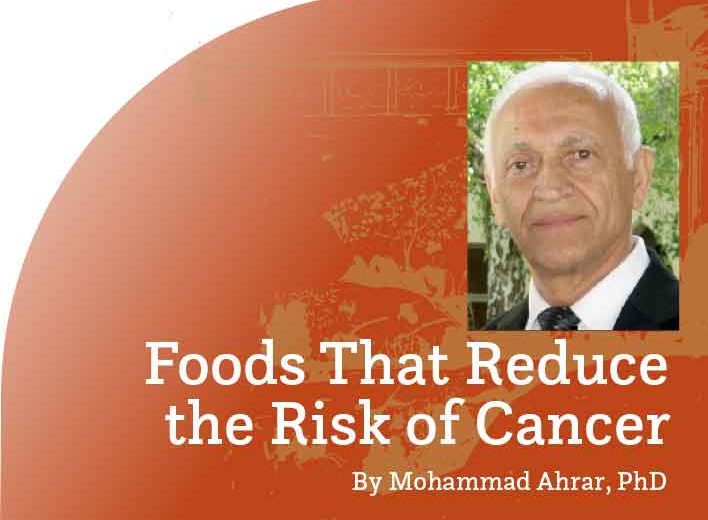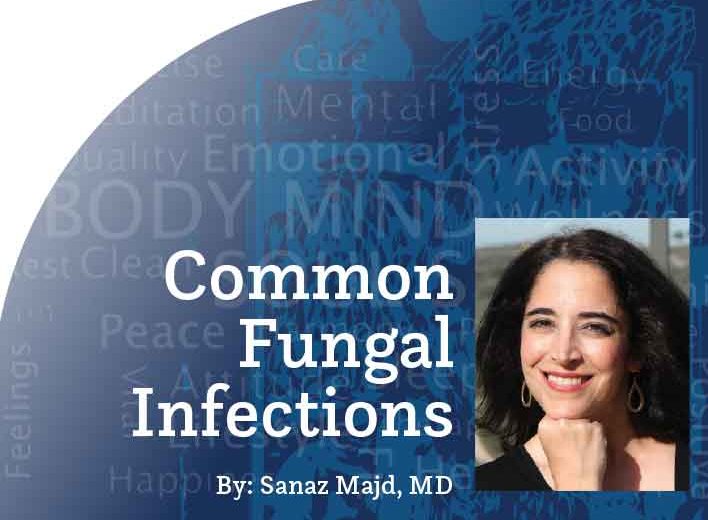By Mohammad Ahrar, PhD
Introduction
Mycotoxins are toxins produced by certain molds that can grow on foods and food products. Some mycotoxins can cause serious health problems and even death in humans, as well as in animals, if ingested in high concentrations. The object of this article is to provide some basic information about fungal toxins in food and ways to avoid them.
The basics
Molds are a type of fungus; they are aerobic (need oxygen to grow) and are found almost everywhere. Fungi (plural of fungus) are so diverse in nature that they have their own category. Except bacteria, all living organisms that consist of true cells come under three main categories known as Kingdoms. Fungi, molds, mushrooms, and yeasts belong to the fungi kingdom. Plants and animals are the other two kingdoms.
Fungi and molds are heterotrophs, which means they depend on other materials to survive. They can use carbon from dead tissues or other sources to produce energy and other chemicals. Fungi release specific enzymes which digest organic matter and absorb nutrients through very thin cell walls. Most molds need minimal moisture to live and can grow in warm temperatures as well as in cold temperatures such as the refrigerator.
How mold enters the food chain
Mold is the most widely encountered microorganism. Mold spores are too small to be seen by the naked eye and can easily be spread by air currents, insects, rodents, pets, wind, and water. When one spore lands on a surface that contains moisture, it can grow rapidly, making many colonies and producing mycotoxin. Mold grows on a variety of crops and food stuffs including cereals, nuts, spices, dried or fresh fruit, coffee beans, bread, cheese, vegetables, starchy foods, jams, grain, corn, peanuts or peanut products, and a wide variety of other products. Toxins from some species of fungi are especially associated with a range of moldy fruits and vegetables, in particular rotting apples and figs. Mycotoxins can enter the food chain due to contaminated crops or during the food handling process and storage. Reports show that up to 25% of the world’s grain crops may be contaminated with mycotoxins. The highest levels were found in pistachios and Brazil nuts. Animal products, such as meat, milk, and eggs, can also contain mycotoxins if the animals consume contaminated feed.
Mycotoxin in spices
Studies have shown that spices such as chili pepper, black pepper, and dry ginger are very susceptible to mold contamination. These spices were found to be the most contaminated spices. Mycotoxins have also been found in medicinal plants and herbal medicines.
Types of mycotoxins
More than 400 mycotoxins have been identified, and many of them can be poisonous in humans. The most important mycotoxins that can cause human and animal illnesses include aflatoxin, citrinin, fusarium toxins, and a few other types. While a type of mold may produce more than one mycotoxin, a mycotoxin can also be synthesized by different types of molds.
Aflatoxin is produced by some Aspergillus fungi, notably Aspergillus flavus. This species produces different toxins. Aflatoxin B1 is the most toxic mycotoxin and is a potent carcinogen. It has been shown that this toxin is directly correlated to liver cancer in many animal species (1). Aflatoxins are largely associated with foods such as cotton, cotton seed, raw pistachios, raw peanuts and peanut products, corn, and some spices.
Citrinin is a toxin that is produced by different species of Penicillium fungus and several species of Aspergillus. Studies show that citrinin is associated with kidney disease in many animal species. Citrinin has been found in many human foods including wheat, rice, corn, barley, oats, rye, and some underground food products.
Fusarium toxins are produced by different species of fusarium fungi and have a history of infecting grains such as wheat and corn.
How mycotoxins affect your health
Mycotoxins have the potential for both acute and chronic health effects via ingestion, skin contact, inhalation, or entering the bloodstream and lymphatic system. If mycotoxins are ingested beyond the tolerance level, they can inhibit protein synthesis, damage macrophages (a type of white blood cell of the immune system), cause liver cancer, and prevent clearance of particles in the lungs which can result in lung disease.
The symptoms of mycotoxicosis depend on the type of mycotoxin, the concentration and length of exposure, as well as the age, health, and gender of the exposed individual. Early symptoms include chronic fatigue, rashes, convulsions, and digestive system discomfort, among others. Reports also show that a weak body due to vitamin deficiency, caloric deprivation, excessive alcohol use, and infectious disease status can all have compounded effects with toxicity of mycotoxins. Aflatoxins, for example, have shown to be genotoxic, meaning they can damage DNA and cause cancer in animal species. There is also evidence that they can cause liver cancer in humans.
Are all fungi poisonous?
Not all molds are poisonous. Some molds are even beneficial. For example, some species of Penicillium and Aspergillus fungi are used to produce cheese and soy sauce. Mycotoxins produced by some fungi can inhibit the growth of other fungi or even prevent bacteria growth. That is how Alexander Fleming, a Scottish physician-scientist, discovered penicillin in 1928. During a series of experiments involving the common staphylococcal bacteria, Fleming uncovered a Petri dish sitting next to an open window which apparently had become contaminated with mold spores. He observed that the bacteria in proximity to the mold colonies were dying. He identified the mold as a genus of Penicillium fungus that produced a special chemical. He discerned that it was not the mold itself but some “juice” (now we know it as mycotoxin) that the mold had produced which had killed the bacteria. In his studies, he found the byproduct of the Penicillium species to be effective against all Gram-positive pathogens.
Do mushrooms produce mycotoxin?
Mycotoxin exposure from molds is almost always accidental. But with mushrooms, ingestion of unknown varieties usually causes health problems due to the toxic chemicals. Various wild mushrooms contain an assortment of poisons that cause health problems in humans. Ingestion of misidentified mushrooms containing mycotoxins may result in hallucinations and serious health problems. Some wild mushrooms are responsible for approximately 90% of all mushroom fatalities.
Does cooking destroy mycotoxin?
Most mycotoxins are stable and heat resistant. Reports indicate that it is NOT possible to inactivate all aflatoxin by normal heating. It is difficult to eliminate it completely once it is produced. Mycotoxins cannot be completely destroyed under normal cooking temperatures (100 to 210° C) in one hour. Research shows that after boiling contaminated foods, 50 to 80% of mycotoxins remain in food, with around 10 to 15% found in the rinse water (5). Roasting can reduce the levels of aflatoxins by 50–70% in peanuts and pecans, and can reduce levels by more than 90% in coffee beans (6). Experiments have shown that chemicals such as bleach with 5% sodium hypochlorite kills some molds and their mycotoxins, including aflatoxin. When you find mold on any food, you can expect mycotoxins have been produced which could be above the maximum level of tolerance; so, the only option is to destroy the product.
How to prevent fungal growth on food
When mold grows on foods and mycotoxins are developed, it will be very difficult to remove them. However, the heating process, at which a temperature of at least 140F is reached and a very low humidity (ideally between 30 percent and 50 percent) can stop growth of hyphae of mold and prevent production of mycotoxins. The key to eliminating mold growth in households is to keep foods in a dry condition and in air-tight containers to eliminate oxygen. Mycotoxins can also be destroyed by the fermentation process; therefore, it is not normally found in apple cider and wine. Molds can grow in foods and fruits kept in refrigeration more than 4 to 5 days.
In the food industry, physical methods used to prevent growth of mycotoxin producing fungi or to remove toxins from contaminated food include temperature and humidity control, irradiation, and photodynamic treatment. These methods are usually applied to some food products before hitting the market and are closely monitored by the Food and Drug Administration in the U.S.
How safe are food products in the market?
There is virtually very little possibility of Aspergillus flavus contamination in agricultural products produced in the U.S., and all food products are controlled by the U.S. Department of Agriculture. Good agricultural practices, plant disease management, and adequate storage conditions limit mycotoxin levels in the food chain. Grain sorting using UV light illumination for aflatoxin reduction is common (6). If corn oil, for example, was produced from contaminated Aspergillus mold, the cooking oil production process usually goes through several steps such as deoxidation, decolorization, and deodorization to prevent foreign matter in the product. Usually if the level of contamination exceeds the maximum safety limit, the food product would not be allowed to enter the market. Therefore, food contamination with aflatoxin and citrinin is very rare.
Safeguards at home
Controlling moisture and humidity is the key to control mold growth. Keeping humidity levels in your home at low levels, preferably less than 50% humidity all day, will prevent mold growth. Circulating air in the house or the use of a dehumidifier are good options. Refrigerators contain moisture which is conducive to mold growth. Regularly cleaning the inside and the door rims with diluted bleach can reduce fungal growth. Storing bread and food in airtight containers can also reduce mold contamination. If food is not being used within 3 to 4 days, freezing is another option. Sinks, sponges, and washing cloths are good sources for mold growth and should be kept dry. Sponges need to be replaced weekly to prevent mold and bacterial growth. Finally, experts suggest that one should never sniff a moldy item because it can cause severe respiratory problems.
References
1- https://en.wikipedia.org/wiki/Mycotoxin
2- https://en.wikipedia.org/wiki/Mushroom_poisoning
3- https://www.sciencedirect.com/science/article/abs/pii/S0168160521002555?dgcid=rss_sd_all
4- https://www.healthline.com/nutrition/is-moldy-food-dangerous#TOC_TITLE_HDR_5
5- https://www.foodsafety-experts.com/food-safety/aflatoxin-detection/
6- https://www.ncbi.nlm.nih.gov/pmc/articles/PMC5063913/
7- https://www.intechopen.com/chapters/69163


















